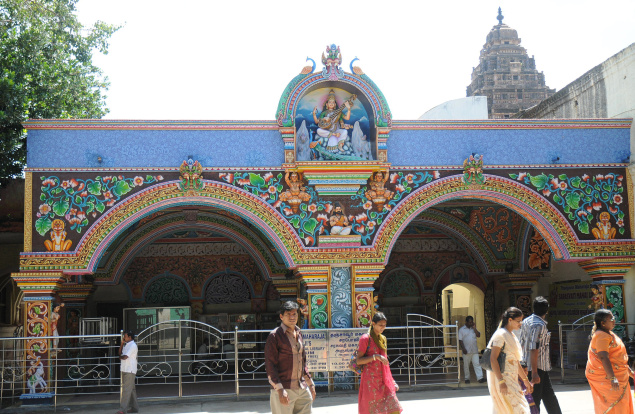Libraries not only provide books, but also act as a link to history, art and culture. The Sarasvati Mahal Library in Thanjavur is one such. It has some rare palm leaf and paper manuscripts, old books, maps, plans, and other treasures. There are 49,000 manuscripts in the library. Of them 25,0000 are palm leaf manuscripts. The “Encyclopaedia Britannica” in its survey of Libraries of the World refers to this as “the most remarkable library” in India.

The first Tamil to English Malabar dictionary printed in 1779 A.D and reprinted in 1809 is found here. There is a huge collection of maps and plans prepared by the British are in the library. One can see the map of Tiruvannamalai written as “Trinomalee” with the “Giri valam” path marked on it.
Rare paintings
The Museum is another attraction of the library. There Botanical pictures painted by Rajah Serfoji II, the Maratha king who was the architect of the library, is on display.

The Maratha King Serfoji two (1798-1832 A.D.) was the architect of the library. But the library was called “Sarasvati Bhandar” during the reign of Nayaks of Thanjavur (1535-1675 A.D). The Maratha rulers (1675-1855 A.D.) patronised the culture of Thanjavur and developed the Palace Library. Among the Maratha kings, Serfoji two was an eminent scholar in many branches of learning. He learned English, French, Latin and other languages. He was also interested in arts, science and literature.
Collection
During his pilgrimage to Benares, he employed many pandits to collect, buy and copy a vast number of works from all renowned centres of Sanskrit learning in the North and other areas. Serfoji not only collected books but read them and made markings in his own hand in the books.

The Tamil manuscript section comprises of more than 7500 titles. It includes literary and medical ones. They are palm leaf manuscripts and can be categorised into rare commentaries on the Sangam works, unpublished portions of classics, and Saiva, Vaishna and Jain works.
The Telugu manuscript section has 1043 palm leaf manuscripts and 44 paper manuscripts. Yet another unique feature of the library is Modi scripts.
Modi is type of script used for writing the Marathi court language during the period of Maratha rulers in Thanjavur. They are all paper manuscripts.
A preservation department preserves these manuscripts. Microfilming of rare manuscripts is also done here. There are 65,000 books in English, Tamil, Sanskrit, Marathi, Hindi, Telugu and other Indian languages. The Publication section prints and sells books.
Located at the palace complex, the library is a reference and study centre for various research scholars. Digitisation of books and manuscripts is planned by the library.
The library functions six days a week from 10 a.m.to 5.30 p.m. and remains closed on Wednesdays, Second Saturdays and Government holidays. The library museum is open all days except on Government holidays.
Preserve for posterity
Palm leaves are periodically cleaned and smeared with Citronella oil, an extract of Citrus grass. It gives flexibility to the palm leaves and repels insects.

Every day 600 manuscripts are cleaned and smeared with Citronella oil. This way all 25,000 palm leaf manuscripts are cleaned in a routine.
How to read books? According to P. Perumal, conservator of the library, books should not be opened beyond 90° .
To help this, book reading stands are kept in the library.
Red colour is used for books as red repels insects. Manuscripts and books are kept in ten big almyrahs.
The Microfilming unit was installed in the year 1980 to preserve books and manuscripts in microfilm form. Sanskrit manuscripts are recorded in the microfilm form and this is a joint venture with Indira Gandhi National Centre for Arts, New Delhi.
Author: G. Srinivasan | Source: The Hindu [November 07, 2011]